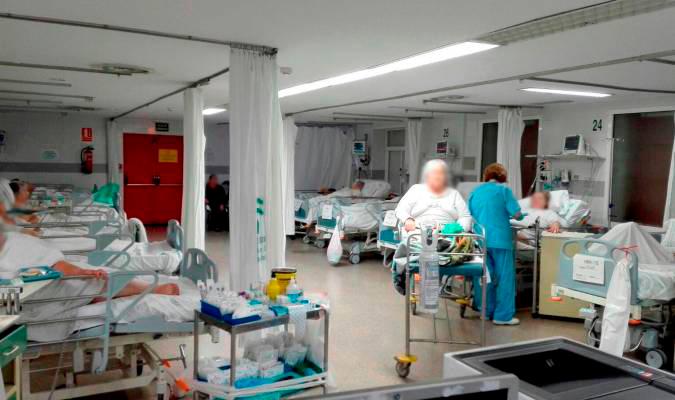Spain started its second week of isolation in the worst possible way, with thedeath of 462 people in just 24 hours. It is the largest daily increase recorded to date and consolidates a trend that no expert expects to see changing in the next few days.
“We are still in a growth phase of the impact of the virus and this will still last for a while,” says Pere Godoy, president of the Spanish Society of Epidemiology.
The number of deaths have risen to 2,316 since the start of the epidemic, which means that the death toll in Spain has doubled in only three days, since the 1,000 deaths registered last Friday. A pace that neither China nor Italy (the country hardest hit by the virus, which took an extra day to double the first 1,000 deaths) have reached.
Furthermore, Spain is experiencing a territorial expansion of the epidemic much more pronounced than Italy. In both cases, about 90% of the first 100 deaths occurred in three regions. In Italy they were Lombardy, Emilia-Romagna and Veneto, in Spain the first outbreaks were Madrid, the Basque Country-La Rioja and Aragon.
More than 80% of the 6,000 deaths registered in Italy continue to occur in the same three regions, a percentage that in Spain has dropped to 65%. The reason is that, unlike Italy, where the rest of the territories continue with very low relative rates, in Spain there has been an accelerated rise in cases in many of the autonomous regions, Catalonia, Castilla y León, and Castilla-La Mancha, and, to a lesser extent, the Valencian Community.
“We can now see that a number of communities, although not achieving the sort of figures seen in Madrid, have registered a notable increase in the number of deaths in the last week. It is a situation that did not happen in Italy”, according to Daniel López Acuña, associate professor at the Andalusian School of Public Health and former director of Sanitary Action in Crisis at the World Health Organization (WHO). He believes that this could be due to the fact that “Italy curbed movement after the first detected outbreaks, while in Spain it was not restricted, even in the days prior to the declaration of the state of emergency”.
Although experts consider that “it is still too early to draw conclusions with the scientific evidence”, Pere Godoy also criticises the failure of the government to restrict movement earlier than it did. “I think it was a mistake to allow the great geographic dispersal of people that occurred in the days prior to the enforced the isolation, which has accelerated the spread of the virus, “he says.
Another reason according to López Acuña is “the trickle of cases imported from Italy that occurred in Spain in the days prior to the first detections of local infections.”
In his daily appearance before the media, the emergency coordinator of the Ministry of Health, Fernando Simón, has tried to be optimistic and saying that there is already a certain “flattening” in the curve of increased cases. “The increase in reported cases is gradually being smoothed out. But we are still not sure that we have reached the peak of the epidemic, “he said.
Healthcare also sees hope with the increase in the number of people who have been cured, currently 3,355, and that among the more than 18,000 hospitalized patients, the percentage of those requiring admission to ICU, has fallen from 15% to 13%. This is “encouraging data indicating that the trends are already being improved by the isolation measures” said Simón.
In total, the cases confirmed yesterday, Monday, increased by 4,717 to over33,000. but “If everything goes along the lines we expect,” continued the emergency coordinator, “it is likely that that numbers will begin to progressively reduce very soon.” Until then, however, the health system must try to improve its response at several critical points that have so far been overwhelmed by the epidemic.





